
On July 16, 2020, the Native Arts and Cultures Foundation (NACF) and the Yale Union (YU) announced that YU would transfer its land and building in Portland, Oregon, to NACF. The historic building will become the headquarters of the NACF and in late 2021, after a period of co-programming, YU will dissolve as a nonprofit.
The museum sector has made only incremental progress in responding to the call for repatriation of cultural patrimony on ethical, rather than legal, terms. As a non-collecting center for (non-Indigenous) contemporary art, one might think it unlikely that YU would place decolonization high on its list of strategic priorities. In fact, it has chosen to go beyond sharing power, or returning objects obtained through colonial appropriation, and turned over all its assets to an organization representing the Indigenous cultures dispossessed by American colonists. I reached out to Flint Jamison, co-founder and Board Chair of Yale Union, and Lulani Arquette, President and CEO of the Native Arts and Culture Foundation, to tell us more about the transfer.
—Elizabeth Merritt, Vice President, Strategic Foresight and Founding Director, Center for the Future of Museums
Elizabeth Merritt (EM): Flint, I understand that this transfer grew out of conversations with Yale Union’s former director, Yoko Ott, about restorative justice. Did this vision evolve in conversation with Native organizations and peoples, and were there any other reparative paths Yale Union explored before deciding to dissolve the organization and transfer the building to the NACF? I’d like to hear more about the decision-making process of your boards of trustees leading up to the agreement.
Flint Jamison (FJ): This is an extremely thoughtful question, thank you.
Being sensitive to what restoration looks likes in the shadow of aggressive neighborhood gentrification and the history of colonization was a process that evolved over Yale Union’s existence. We are not experts in restorative justice, nor are we urban planners. As a co-founder of this white art institution, I felt complicit in the recent neighborhood gentrification and Ms. Ott was able to initiate the conversation of transferring the building to an Indigenous-led organization like Native Arts & Cultures Foundation. Ultimately, it’s an uncomfortable thing for white settlers to acknowledge: that the systemic action of creating change through divestment of privilege will ultimately involve loss.
Regarding potential alternative paths, we did explore a wide range of options. It’s important to remember, however, that we are a small institution that was founded by artists, that our board has been comfortable taking risks, and that our mission endeavors to push culture forward. This is the institutional context of arriving at such a proposal.
I’d also like to mention that financially Yale Union has always struggled. We are not natural fundraisers and we benefited from the unearned privilege of property ownership, and when not presenting exhibitions we were able to rent out the venue to generate income. That earned income will now benefit the Native Arts & Cultures Foundation.
Perhaps Lulani can address her relationship with my Yale Union co-founder, Yoko Ott. Both having histories in Hawaii, it’s important also to recognize the personal connection these leaders had. The conversation between the two organizations blossomed organically as a result of that connection.
EM: Lulani, what made this transfer a good match for your organization’s purposes?
Lulani Arquette (LA): While we weren’t looking for a building at the time we were approached by Yoko, both NACF board and staff soon recognized the great significance of a Native arts and cultures organization being able to permanently establish itself in a space of that magnitude in the heart of one of the most vibrant urban areas in the Pacific Northwest.
In order to inform and facilitate our board of directors’ decision-making process, we conducted a thorough and detailed building feasibility study. We contracted with construction and architecture firms that had expertise in historic building assessment and renovation and generated an in-depth report outlining mock floor plans and space plan usage, financial assumptions, and building revenue models—all of which informed our vision statement for the building. The board was presented with the report along with potential scenarios that included operating the building while we raise funds for its renovation.
EM: Flint, have there been any criticisms or concerns about the transfer, and if so, how has the Union addressed those issues?
FJ: To some extent, I addressed this question about the board decision-making process above. YU’s Board and staff have been supportive in the realization of this vision, but accepting loss has not necessarily been easy. It’s important for me to acknowledge that this change involves personal loss for our staff members. Hope, Andrea, Jeff, Jenny, Gary, and Mark compose our staff, and their commitment to the realization of Ms. Ott’s vision cannot be understated.
Although the response has been extremely positive, with any ambitious or radical proposal such as this, I think one can expect criticism. The very few criticisms we have heard tend to focus on what will be lost and not what will be gained. Our response to any critique is to keep in perspective that this transfer of Yale Union’s valuable property asset is an unparalleled opportunity that presents Native cultures in an urban setting.
EM: I’ve read that there will be some period of “co-organized programming” in 2021 before Yale Union dissolves as a nonprofit. Can you tell me more about that? What are the goals for this period of collaboration?
LA: There will be some crossover programming with a solo exhibition by Canadian Indigenous artist Marianne Nicolson, in 2021. The YU team have been working on this exhibition for a long time and it had to be postponed because of the pandemic. So when they decided to move it into 2021, we assured them that we’d support the exhibition in any way we can.
FJ: Like many art institutions, Yale Union had the rug pulled out from under us as a result of the pandemic. When it is safe to do so, NACF has graciously offered to let us program the Nicolson exhibition next year.
EM: Lulani, how does the creation of the Center for Native Arts and Cultures allow NACF to serve your communities in new ways?
LA: CNAC will be the only center of its kind in the Pacific Northwest and we believe it will raise the visibility of the Native population in the Portland metro area, and the region at large, in ways that we have not been able to before. With this opportunity, we are able to expand our work into cultural production and presentation on both a regional and national scale.
It is also an opportunity to create a community gathering place for presenting and advancing Native arts and creativity, which is one of the most powerful ways to foster empathy and understanding and promote cultural resilience. We have been fortunate to have great partners that have provided us with exhibit and performance spaces for our artists, but to have our own space allows us to expand the scope of our work and enables us to better support Native artists and culture-bearers in telling their stories and being seen and heard. Additionally, CNAC will present opportunities for entrepreneurial partnerships with Native businesses.
EM: Flint, does the closing of Yale Union as a center for contemporary arts create gaps in service to the community that will need to be filled?
FJ: It is my opinion that any gaps will be overshadowed by the opportunity presented by the Native Arts & Cultures Foundation occupying the space. Listening to their voice is urgent. It’s long overdue.
EM: Many museums are grappling with how to decolonize their practices (and collections). Lulani, can you share some thoughts about what appropriate and meaningful steps that museums might take towards restorative justice?
LA: We believe that restorative justice in museums can come about when museums play an active role in connecting communities to collections, understanding that the role of a museum is not only to collect and display existing artifacts, but also to help communities revive and remember traditions that may have been forgotten (often as a result of colonization).
Here are a few guiding principles about how museums can engage in decolonizing work:
- Museums that represent Indigenous peoples should build and maintain on-going relationships with Indigenous communities, giving Indigenous people authority over how we would like to be represented (this could include at the very least developing Indigenous advisory groups, hiring Indigenous staff [and building opportunities to train future generations of Indigenous heritage workers], diversifying collections acquisition boards, and engaging in Indigenous community outreach).
- Museums must be accessible and welcoming to Indigenous communities (use Indigenous language and Indigenous cultural protocols when appropriate (such as land acknowledgement); make sure Indigenous voices are included in museum records; provide access to collections).
FJ: I would like to add here that it may have been easier for Yale Union to take this risk because it does not have a mandate of being a collecting institution. As “protectors” of cultures, I think that archives and museums need to address their inherent colonial nature and their ambition for possession. Air conditioning is also a problem that needs to be discussed more openly. The earth is in crisis. Our deeply rooted cultural penchant for comfort for ourselves and our possessions justifies the archive and is part of the problem. Decolonization is a very specific term and applies to the unjust ownership of land. Decolonizing is literally unsettling. It does not compromise. As unpopular as it may be, for any museum to decolonize, the actions are simple: the institution would return the land to Indigenous populations and research the provenance of its cultural possessions and return those as well.
About NASCF:
The Native Arts and Cultures Foundation advances equity and cultural knowledge, focusing on the power of arts and collaboration to strengthen Native communities and promote positive social change with American Indian, Native Hawaiian, and Alaska Native peoples in the United States. It has assets of approximately $10 million and its current annual operating budget is a little over $2 million.
About Yale Union:
Yale Union is a center for contemporary art in Southeast Portland, Oregon. It is led by a desire to support artists, propose new modes of production, and stimulate the ongoing public discourse around art. As of 2019 the organization had $429,853 in revenue and $2.4 million in assets.



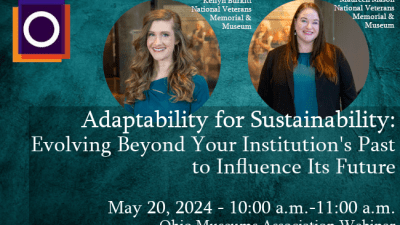
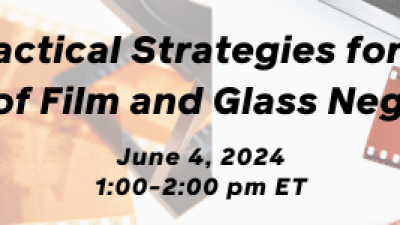
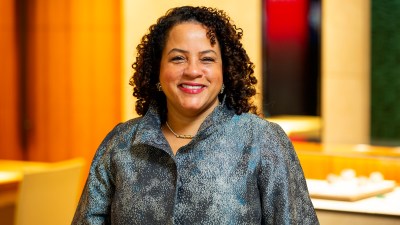
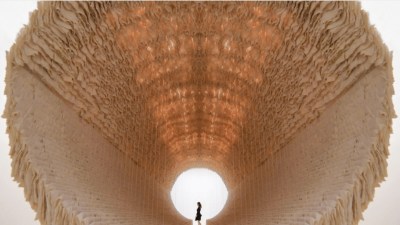
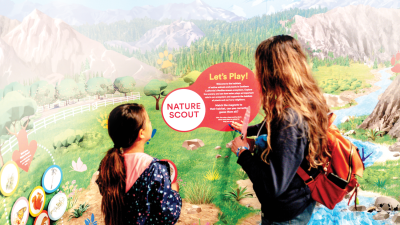
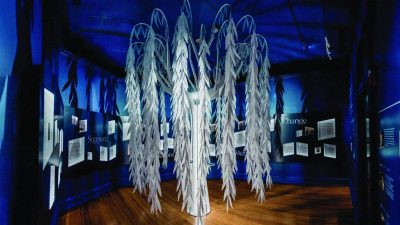
Comments